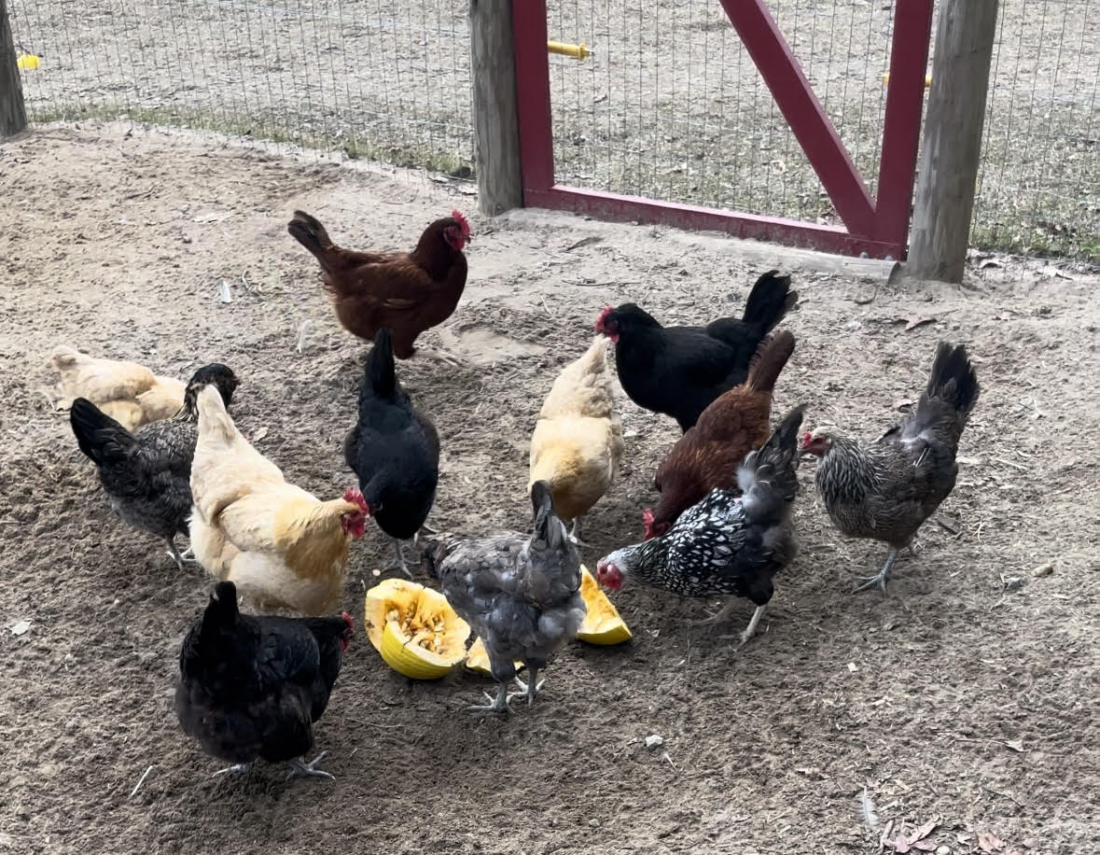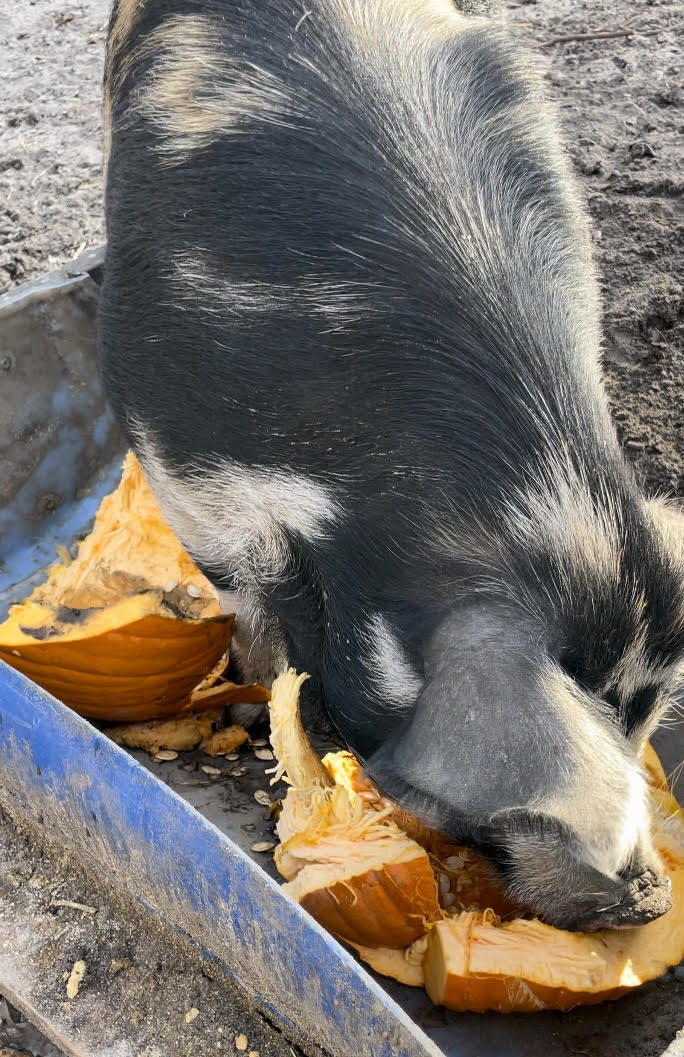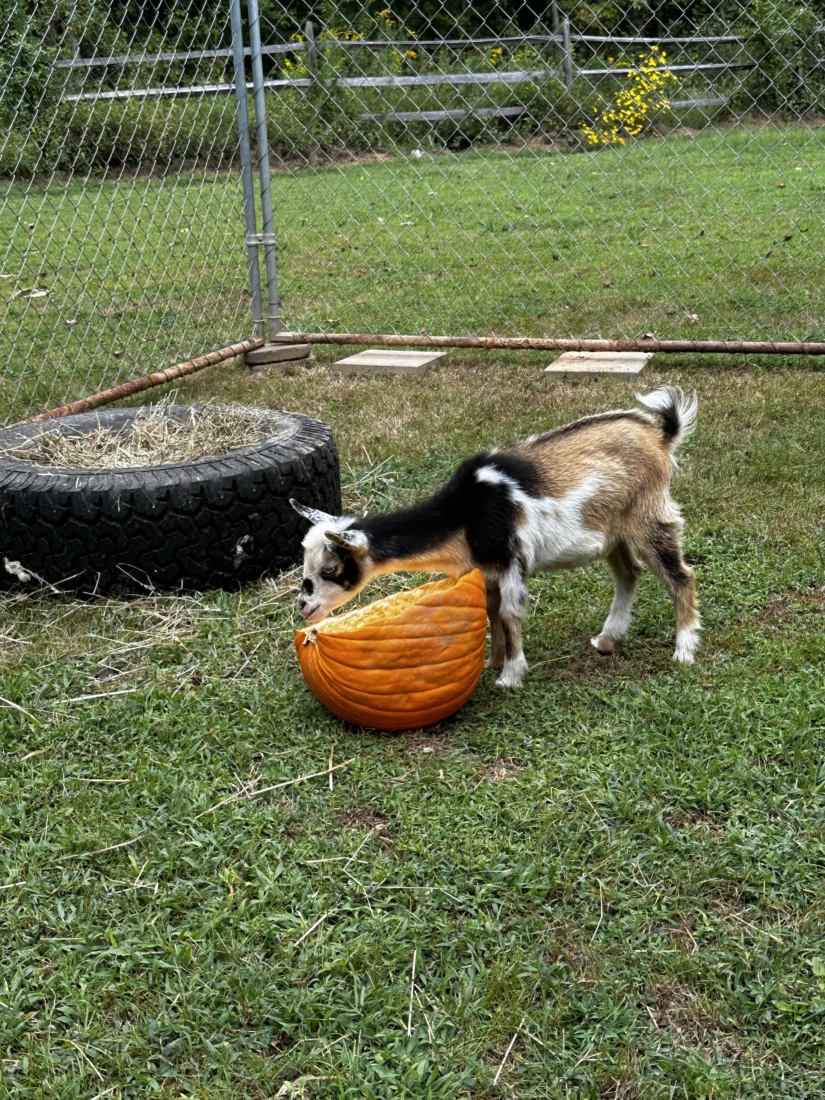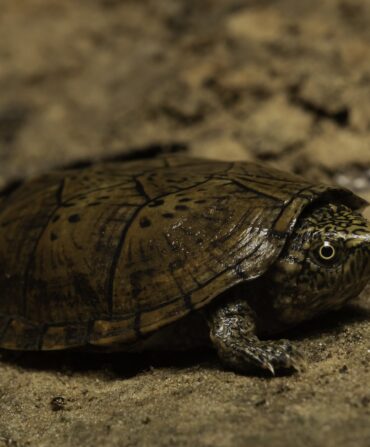Soon enough, jack-o-lanterns adorned with spiky smiles, flickering candles, and gaping triangle eyes will dot nearly every front porch. But the spookiest sight is surely a sagging, rotting squash struck down by Southern heat and humidity. Here are a few ideas for reusing your leftover gourds, carved or not, before they reach that point—plus one tip if you’ve waited too long.

Donate to a local farm.
Pumpkins that haven’t rotted yet have lots of use on farms—all kinds of livestock enjoy nibbling on the scraps. “Goats, chickens, pigs, and even the farm dogs enjoy munching on pumpkins, and they are filled with nutrients,” says Chriss Hall of Triple H Farm in Swansea, South Carolina. “The eggs laid by the hens after eating pumpkin have deep rich, orange yolks that pass the extra nutrition on to us as well.”

Scatter in nearby wooded areas (or your own backyard).
If you don’t know of any farms in your area, you can leave pieces of pumpkin in places that animals frequent, like patches of woods. Cutting pumpkins into smaller pieces makes it easier for deer, raccoons, and other wildlife to eat; just make sure the pieces don’t contain paint and haven’t begun to rot.
Make a bird feeder.
With a few simple tweaks, any pumpkin can be transformed into a natural bird feeder. First, remove any remnants of decorations such as melted wax or stickers. Then, either cut the pumpkin in half, or cut a large hole in the front or side of the pumpkin. After making the hole and removing some pulp, fill the pumpkin with bird seed, and place it on your porch or any area where birds can access your new feeder. Make sure to discard the pumpkin as soon as it begins to rot.
Feed seeds to birds and other wildlife.
The pumpkin’s own seeds are also favored by outdoor animals. After scooping them out of your soon-to-be jack-o-lantern, rinse the seeds and set them aside to dry (that is, if you aren’t roasting them for yourself). Simply scatter the seeds in grassy or wooded areas for birds and other small critters to pick at. Fun fact: Hall says pumpkin seeds are a great natural dewormer for her farm animals.

Set it in the yard to spawn new pumpkins.
Here’s a good option for pumpkins that have never been carved. Simply place the intact pumpkin in a spot in your yard where you don’t mind hosting a sprawling future vine (or staring at a slowly decomposing squash). By next summer, you’ll be well on your way to a pumpkin patch of your own.
Compost!
This is where rotten pumpkins come into play. Incorporating decaying pumpkins as compost in gardens or on farms is the perfect way to make use of them in their final stages. “Any pumpkins that are donated that have been painted, we can toss in our compost pile, which develops a new pumpkin patch for us as the pumpkins decompose,” Hall says. “Just one pumpkin tossed in the compost pile provided us with ten usable pumpkins this spring.” Composting pumpkins is easy—simply clean them of any decor, cut them up into small pieces, and let them decompose in your compost pile.








